A Continent in a Suit
Born in Lubumbashi, DRC in 1973, Luzamba grew up amid Mobutu Sese Seko’s Authenticité campaign, which banned Western suits in favour of the abacost, a collarless state uniform. The birth of La Sape (Société des Ambianceurs et des Personnes Élégantes) emerged as stylish resistance: men dressed in flamboyant suits as wearable defiance.
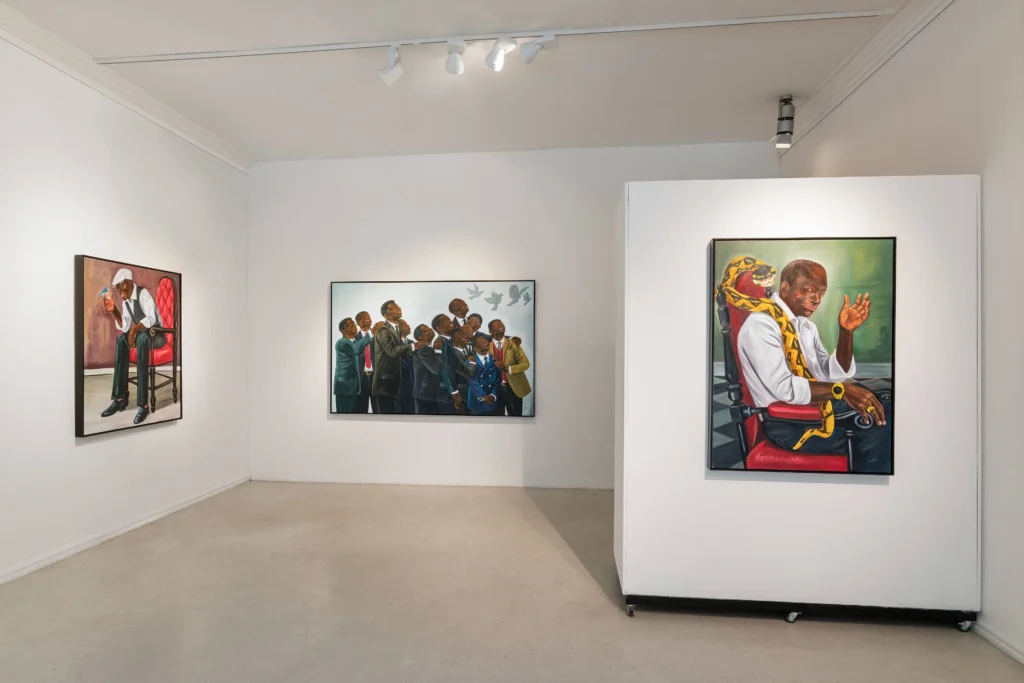
Painting the Sapeurs: Fiction, Memory, Identity
Luzamba began sketching Sapeurs in 1995; by the early 2000s, they had become his central subjects. In his vibrant canvases, sharply dressed figures populate ambiguous, flat-colour spaces, stripped of context, yet thick with narrative potential. He removes environmental clues to focus our attention on gesture, attire, posture and invites viewers across Africa to bring their own stories to the table
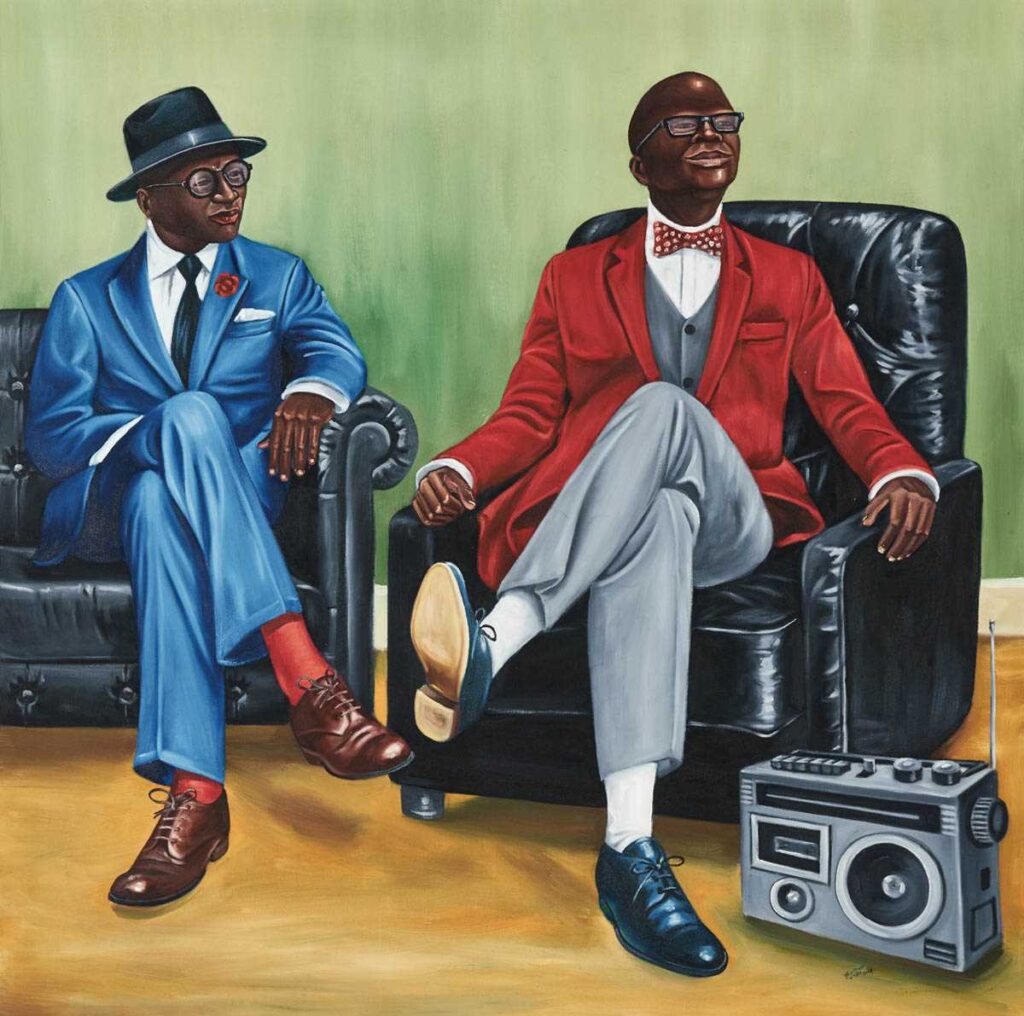
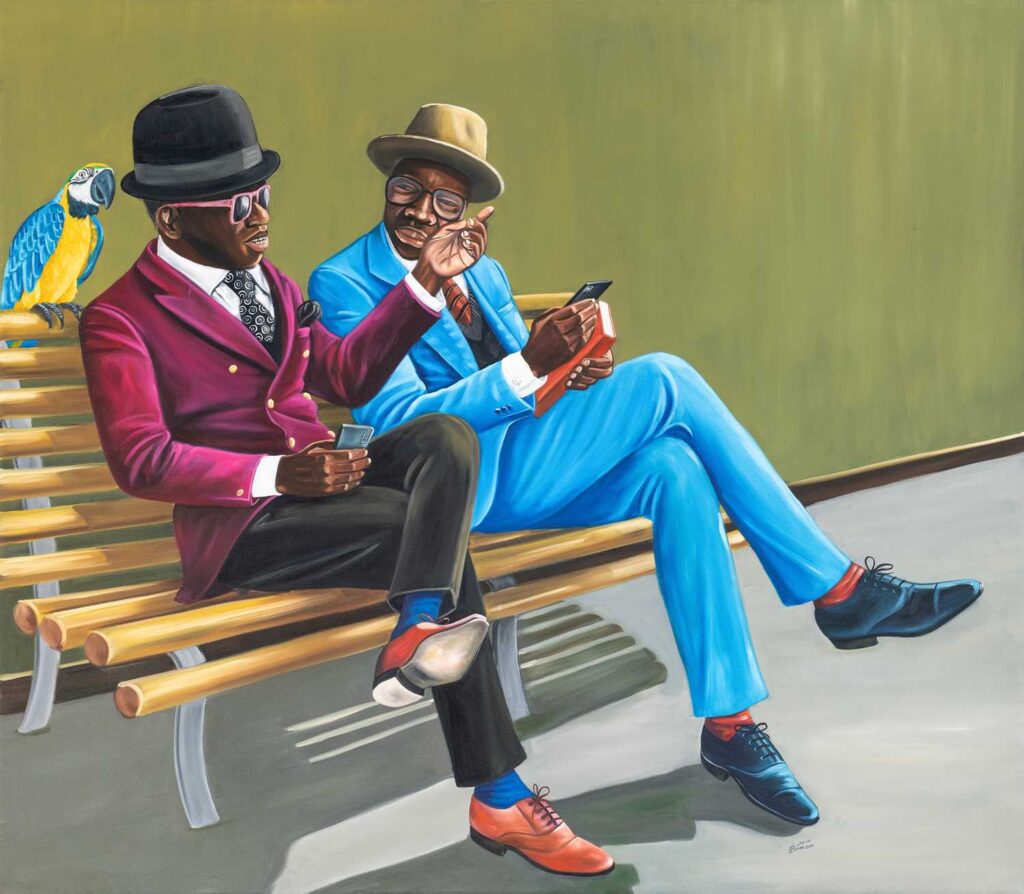
From Migration to Pan-African Solidarity
Migrating to South Africa in 2000 for his art career, Luzamba transformed his migrant experience into visual metaphors. His paintings often depict everyday migrant life, with scenes alternating between struggles and leisure, lifted to broader meditations on identity, class, gender, and the politics of fashion across African cities from Kinshasa to Johannesburg.
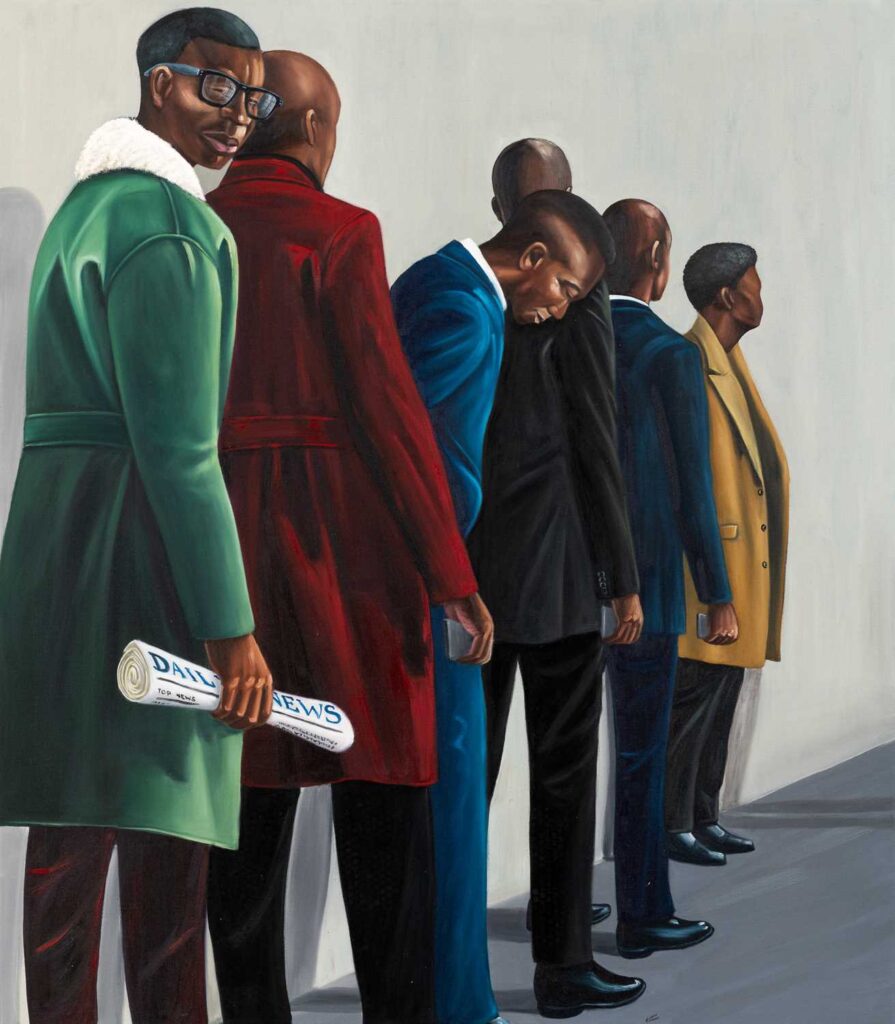

SATIRE, SYMBOLISM & SUBTLETY
While rooted in Congolese history and the paradox of postcolonial Elites, Luzamba’s work maintains a subtle humour, a restrained satire. His compositions hover at the edge of irony , are these aspirations or a critique of aspiration? He frequently stays ambiguous, allowing each viewer, from Cape Town to Dakar, to draw their own introspective connections.
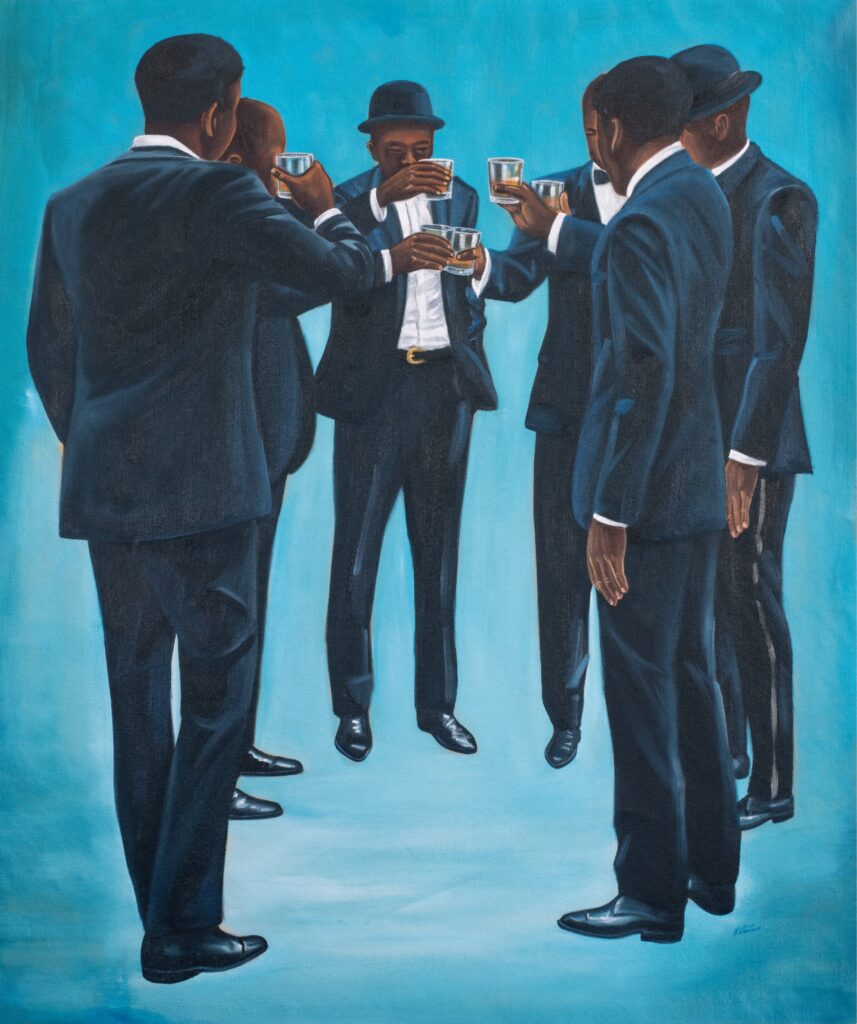
Signature Installations Across the Continent & Beyond
His titles come from Swahili, Angalia Kwa Karibu (Look Close), Mulambo (Black Tax), Mkimbizi (Asylum Seeker), Maisha Mapya (New Life), and Pamoja na Furah (Togetherness), evoking layers of communal duty, economic burden, celebration and personal freedom. In Black Tax 2, a hand steals a dollar from a well-dressed man; in Mkimbizi, a traveler hurries with suitcases. Luzamba offers gestures, not answers.
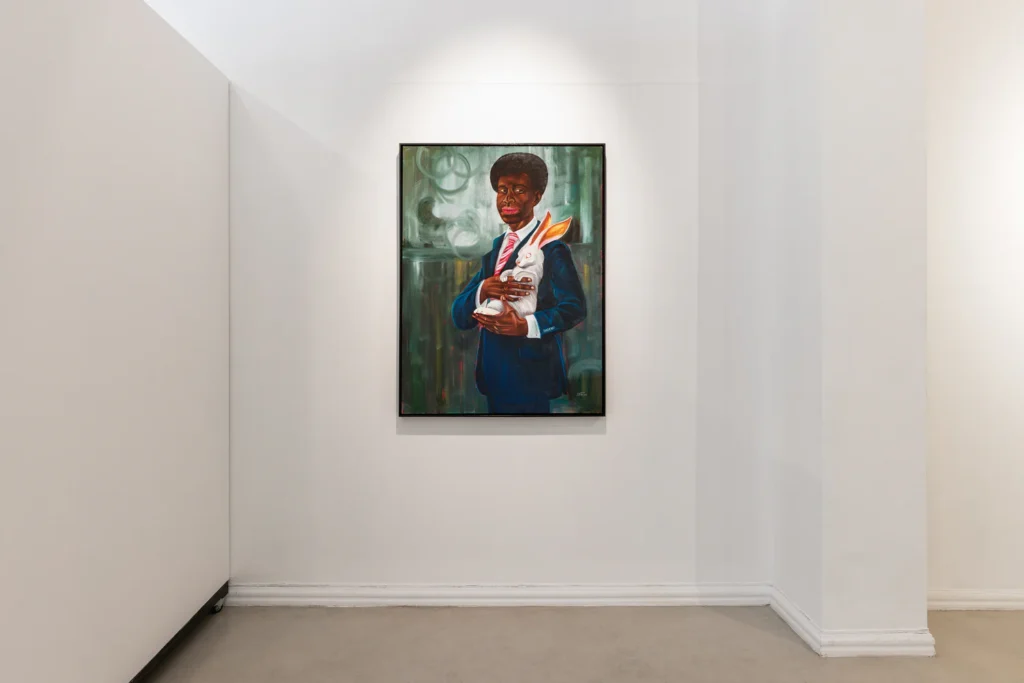
CONTINENTAL RESONANCE
While his earliest subjects recall Kinshasa’s Sapeurs, his themes resonate across Africa: the burden of supporting extended family, the calculated aspiration through wardrobe, and rituals of brotherhood and resistance. His recent Folk Ritual series detailed these communal rites, like Amandla, where men raise fists in solidarity under brightly coloured arches, a playful yet powerful image of African togetherness beyond borders.
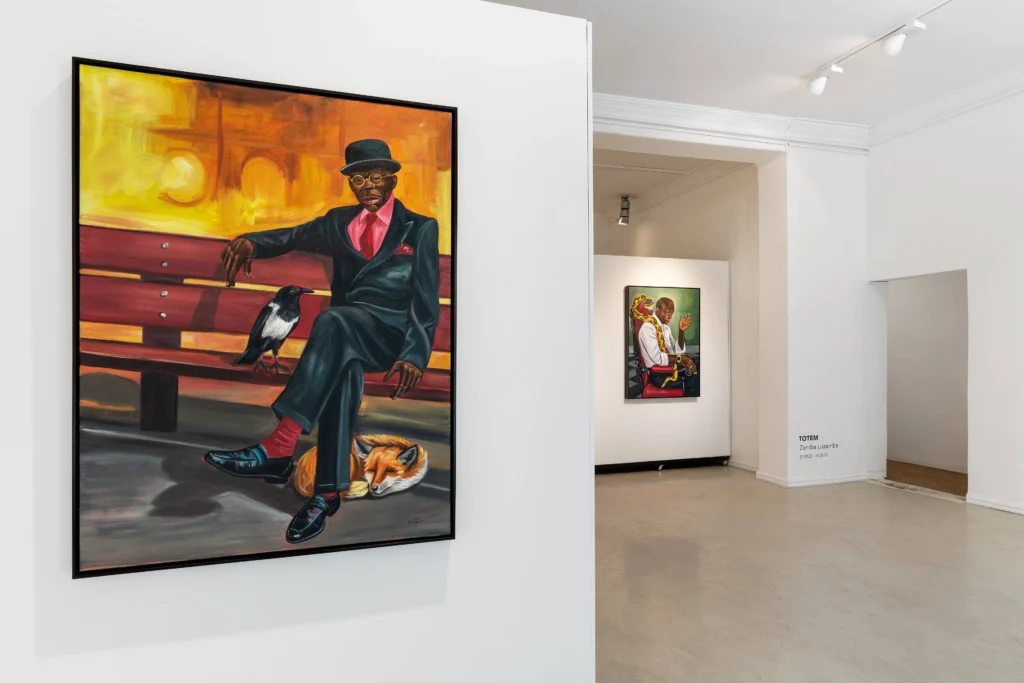
Artistic Practice & Visual Poetics
Luzamba writes concept notes, sketches rigid grids, then develops layered pen drawings before working in oil. Colour enters at the canvas stage: vivid backgrounds isolate the figures, forcing us to confront the body language, expressions, accessories and the symbolic meaning of each hue and gesture. His paint application is restrained yet rich, his composition deceptively simple but charged with conceptual depth.
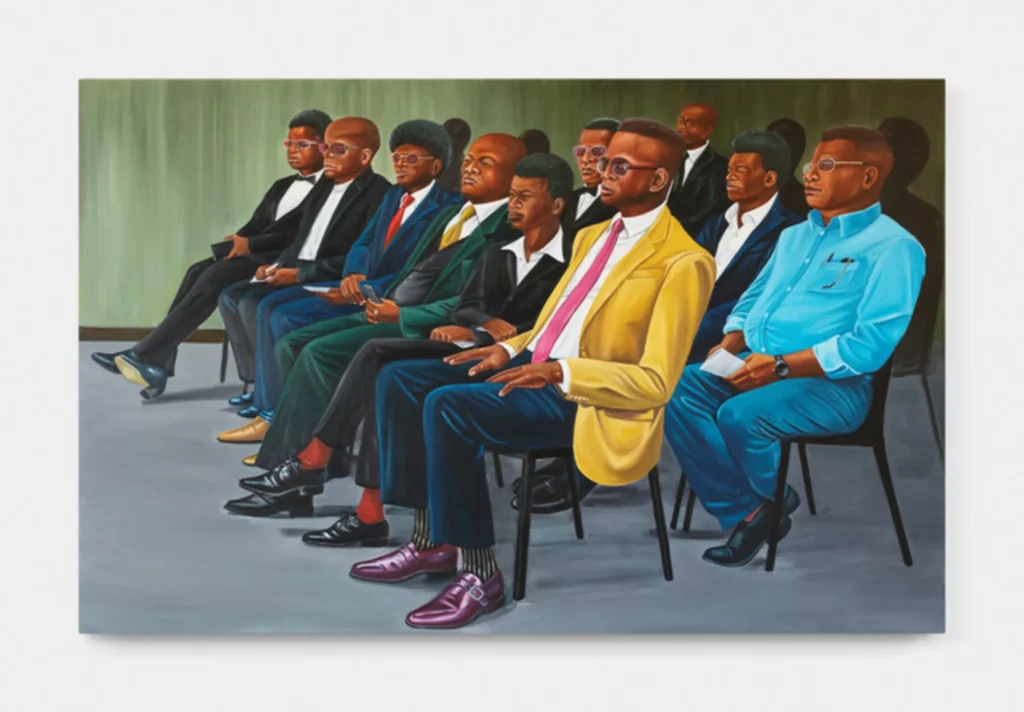
Zemba Luzamba’s paintings are elegant portals: visually arresting yet conceptually open. They invite you, from Accra to Nairobi, to stand looking at men in suits and ask : what am I really seeing?
He reminds us: pause, look closely, because beneath the surface lies the history, hope, diaspora and politics of an entire continent.




